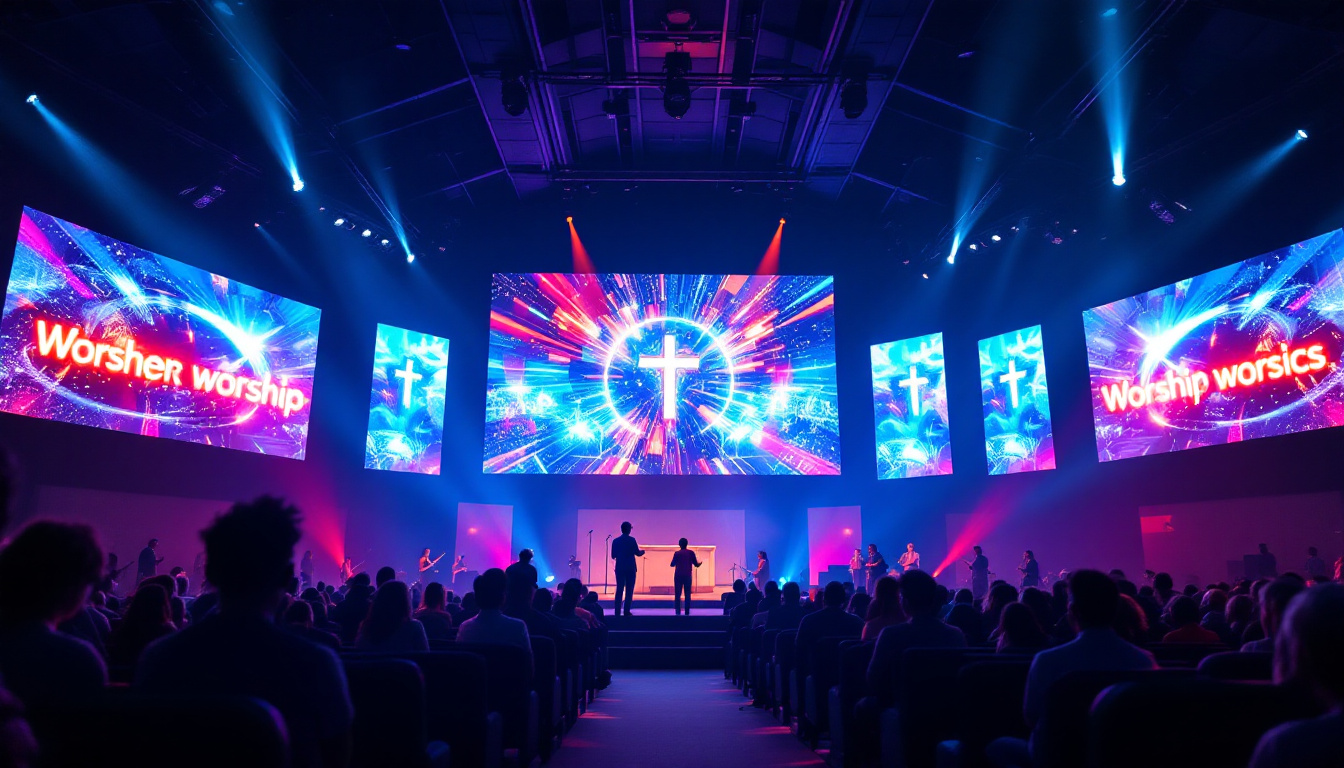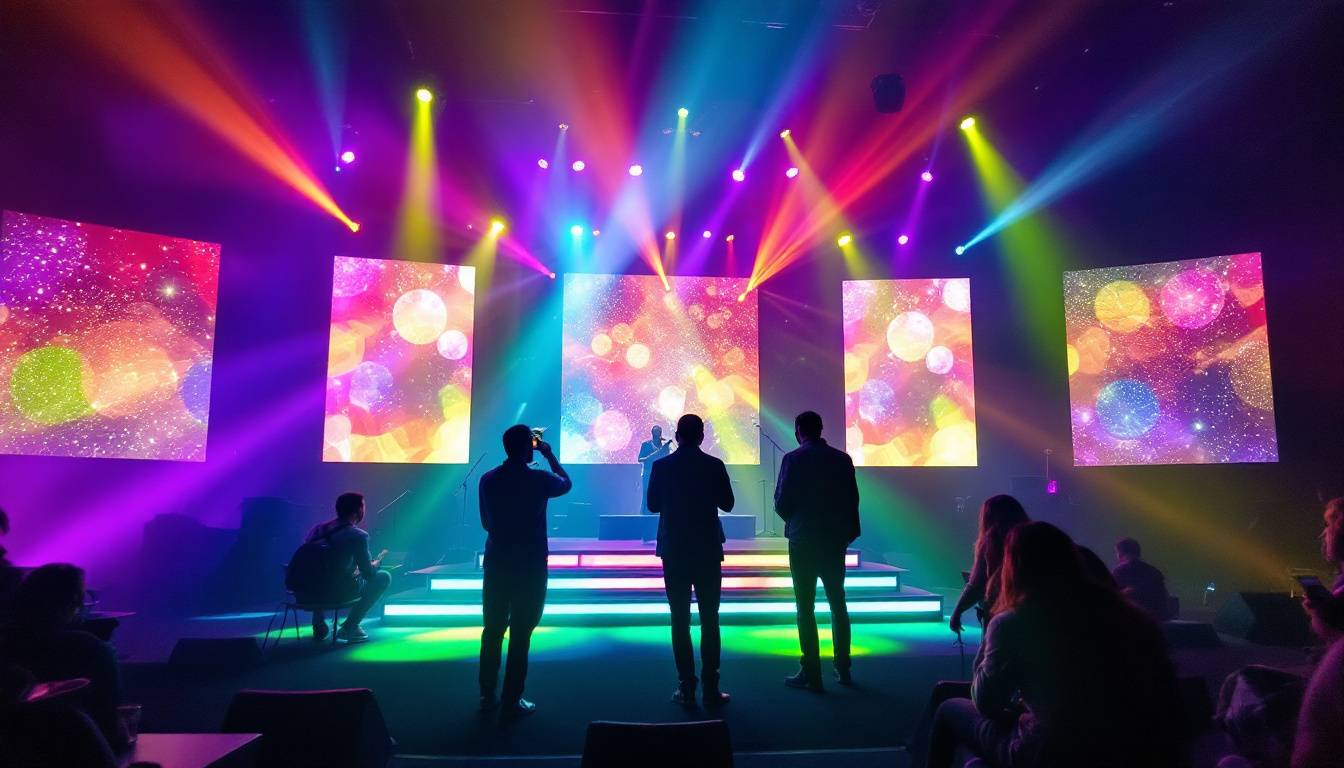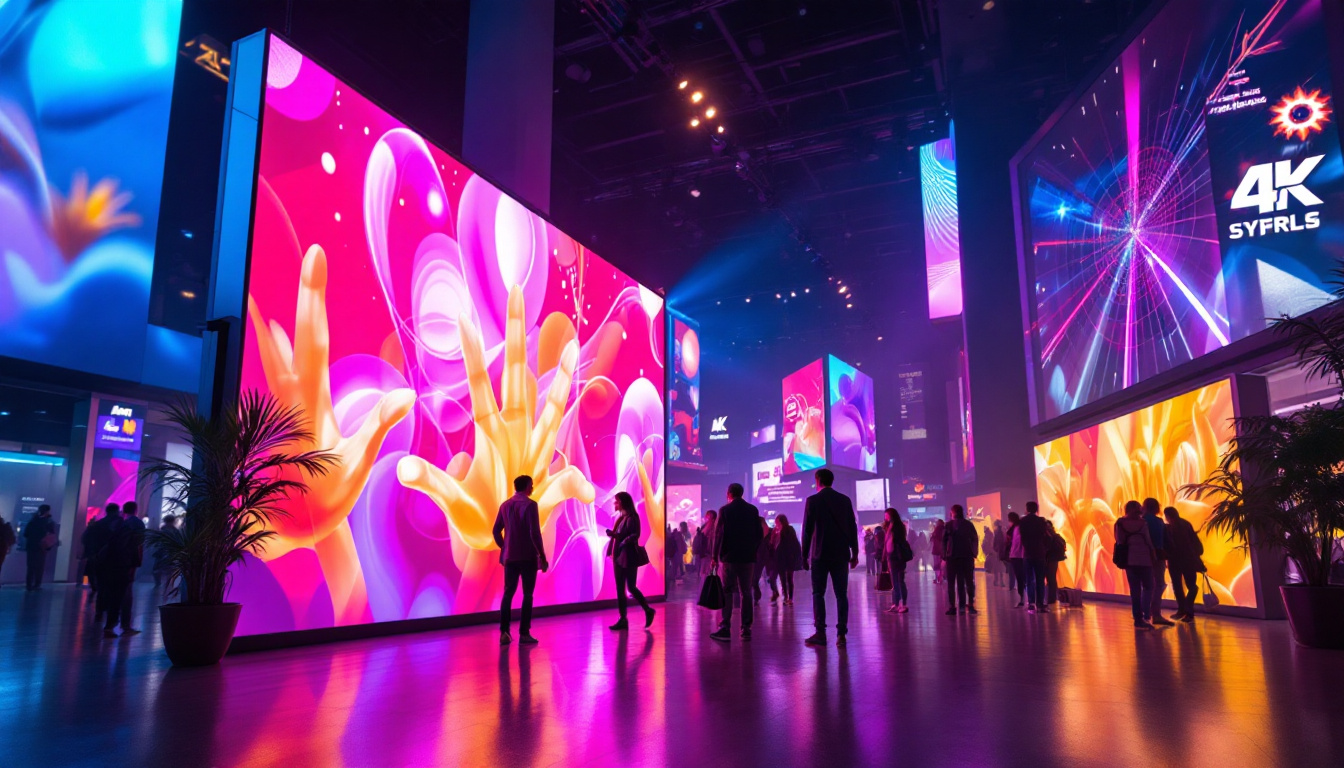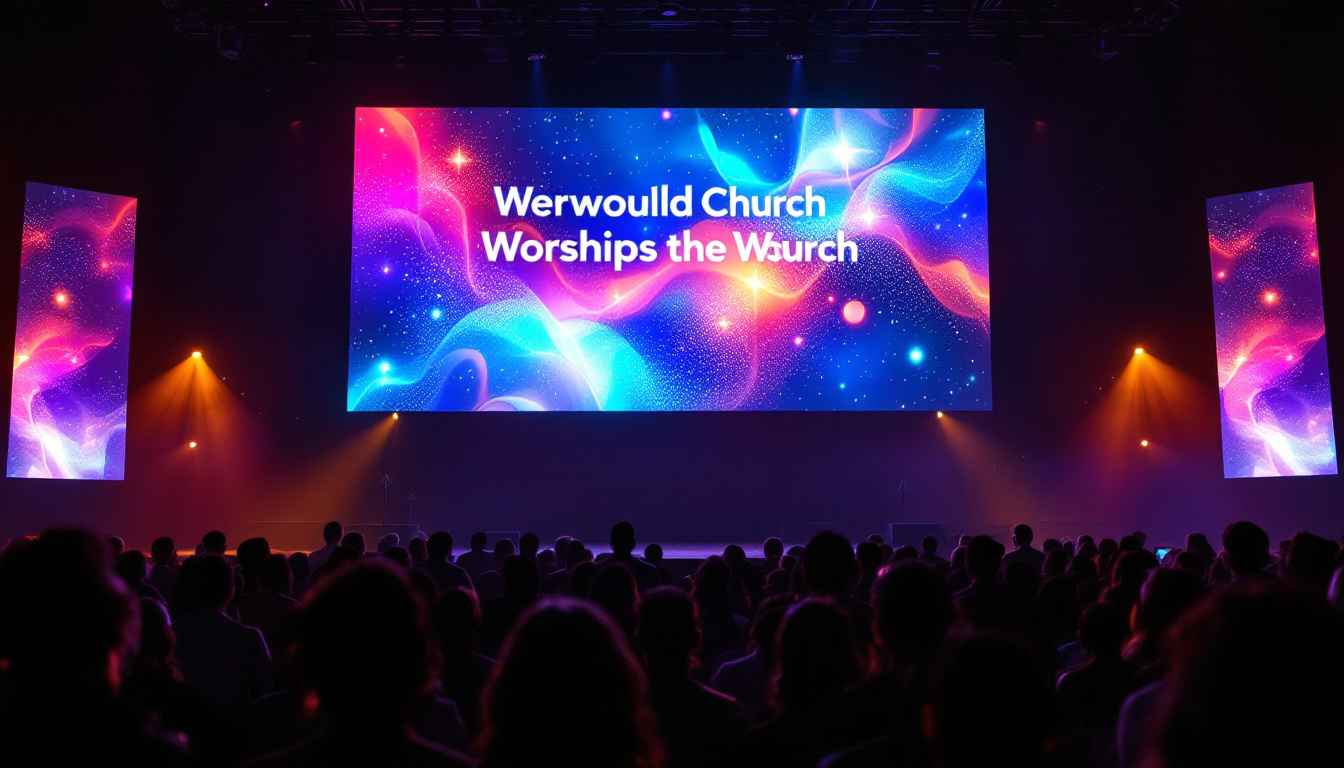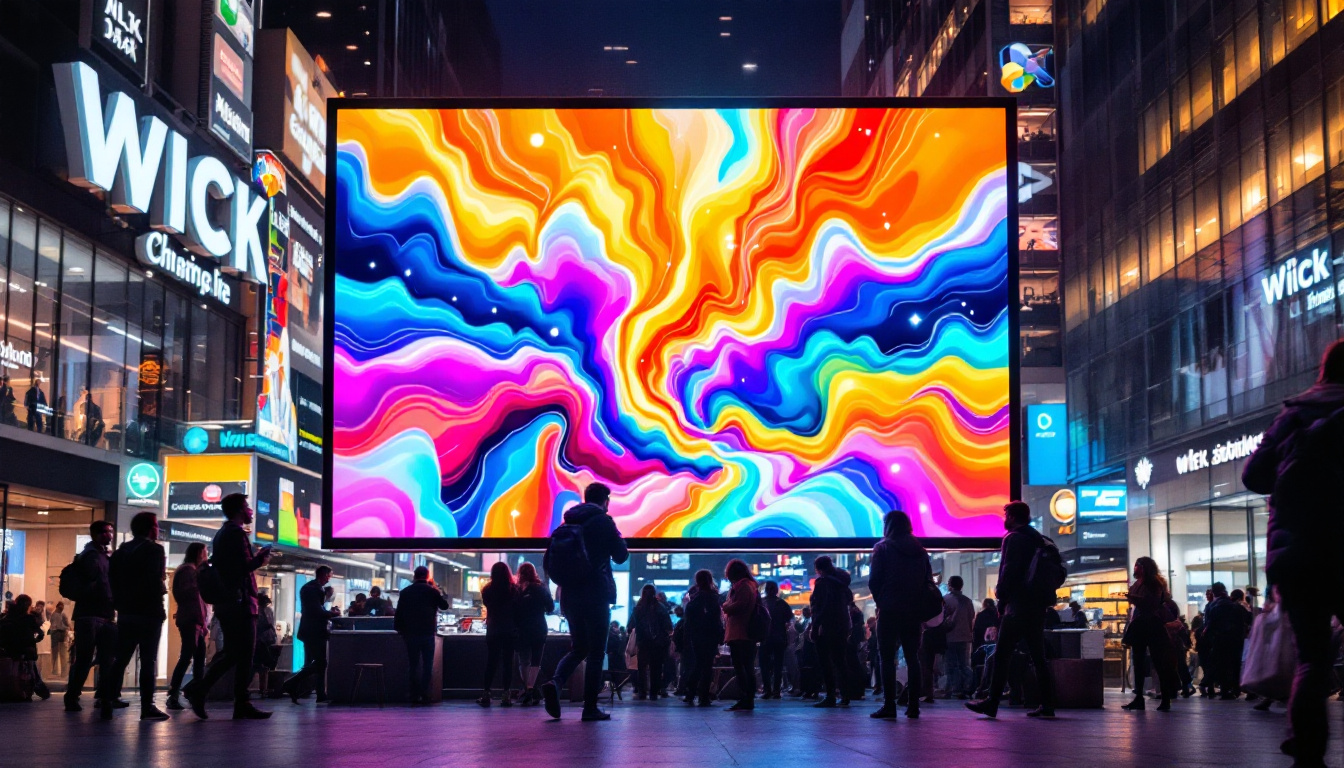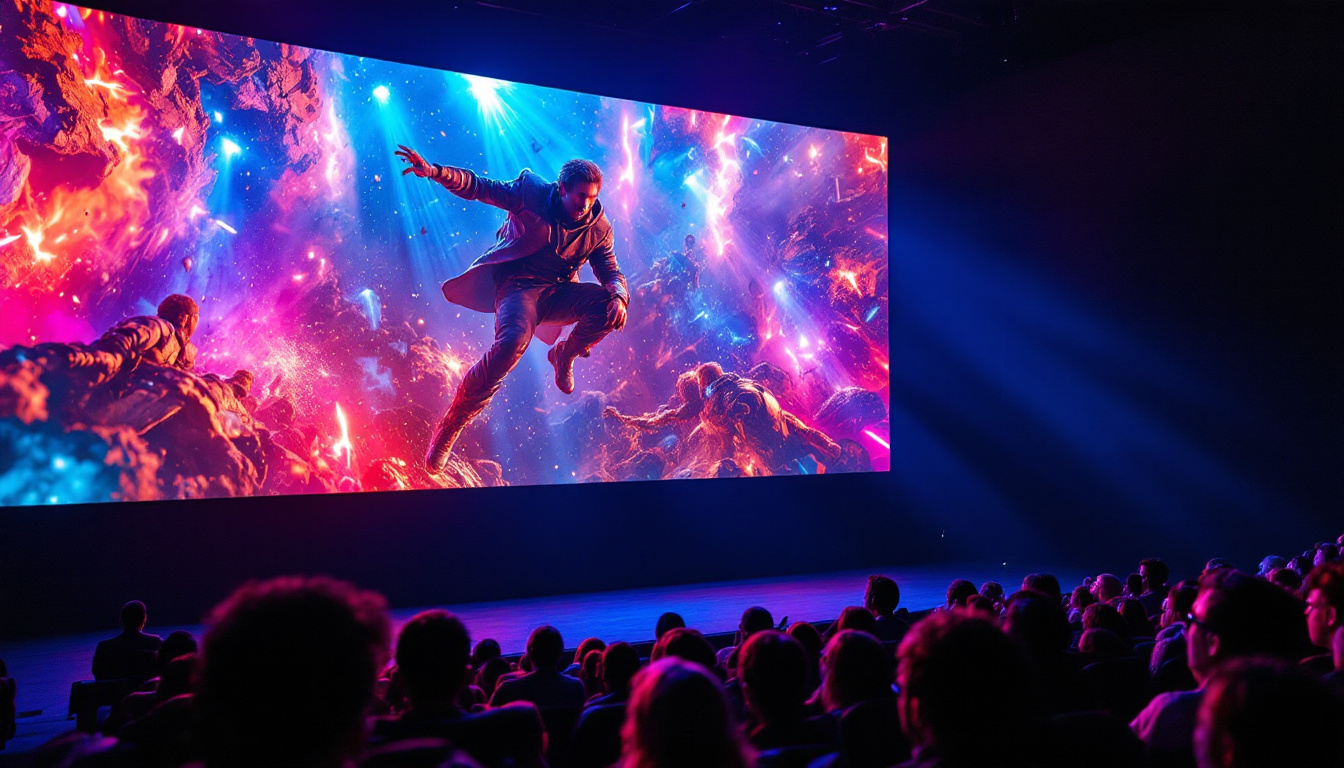In the modern age, technology plays a pivotal role in enhancing the experience of worship and community engagement within churches. One of the most significant advancements is the integration of LED displays, commonly referred to as church LED walls. These dynamic visual tools have transformed how congregations communicate, share information, and engage with worship. This article delves into the intricacies of church LED walls, exploring their benefits, types, installation processes, and best practices for effective use.
Understanding LED Technology
LED, or Light Emitting Diode, technology has revolutionized various industries, including entertainment, advertising, and now, religious institutions. The core principle behind LED displays is the emission of light when an electric current passes through a semiconductor material. This technology allows for vibrant colors, high brightness, and energy efficiency, making it ideal for large-scale displays. The evolution of LED technology has been rapid, with advancements leading to even more efficient diodes that can produce a wider spectrum of colors and improved longevity, making them a sustainable choice for long-term use.
The Basics of LED Displays
LED displays consist of numerous tiny diodes that work together to create images and videos. These displays can be categorized into two main types: direct view and rear projection. Direct view LED displays are commonly used in church settings due to their ability to produce bright, clear images visible even in well-lit environments. The modular nature of these displays also allows for flexibility in design, enabling churches to customize the size and shape of their screens to fit their specific architectural needs.
One of the key advantages of LED displays is their ability to provide high-resolution visuals. This is particularly important in a church setting where the message conveyed through visuals can significantly enhance the worship experience. High-resolution displays ensure that text, images, and videos are crisp and easily readable from various distances within the sanctuary. Furthermore, the longevity of LED technology means that churches can invest in displays that will remain vibrant and functional for many years, reducing the need for frequent replacements and maintenance.
Benefits of LED Walls in Churches
Implementing LED walls in churches offers numerous benefits that extend beyond mere aesthetics. These advantages can enhance the overall worship experience and facilitate better communication within the congregation. The ability to integrate multimedia elements into services allows for a more immersive experience, where music, visuals, and spoken word come together harmoniously to uplift and inspire attendees.
- Enhanced Visibility: LED walls provide exceptional brightness and contrast, ensuring that content is visible even in bright daylight. This is crucial for outdoor services or churches with large windows. The clarity of the display means that even the smallest details, such as lyrics or sermon notes, can be seen without straining, allowing congregants to engage fully with the service.
- Dynamic Content: Unlike traditional projectors or screens, LED walls can display a variety of content, from live video feeds to pre-recorded messages, creating a more engaging experience for attendees. This flexibility allows churches to adapt their presentations to suit different themes or events, making each service unique and memorable.
- Energy Efficiency: LED technology consumes significantly less power compared to traditional lighting solutions, leading to lower energy costs and a smaller carbon footprint. This not only benefits the church financially but also aligns with many congregations’ values of stewardship and environmental responsibility.
Additionally, the installation of LED walls can foster a sense of community by allowing for interactive elements, such as live polls or social media feeds, to be integrated into services. This can encourage participation and create a more connected atmosphere among congregants, making everyone feel like they are part of the service, regardless of where they are seated. As technology continues to evolve, the potential for LED displays in enhancing worship experiences is limitless, paving the way for innovative approaches to spiritual engagement.
Types of LED Displays for Churches
When considering an LED display for a church, it is essential to understand the different types available. Each type serves unique purposes and can be tailored to the specific needs of the congregation.
Indoor LED Displays
Indoor LED displays are designed for use within church buildings. They are typically used for announcements, worship lyrics, and multimedia presentations. These displays come in various pixel pitches, which determine the resolution and clarity of the images displayed.
For indoor settings, a smaller pixel pitch is often preferred. This allows for closer viewing distances without sacrificing image quality. Indoor LED displays can be mounted on walls or suspended from ceilings, offering flexibility in design and layout.
Outdoor LED Displays
Outdoor LED displays are built to withstand the elements, making them ideal for churches that host events in open spaces. These displays are typically brighter and more robust than their indoor counterparts, ensuring visibility in direct sunlight.
Outdoor displays can be used for various purposes, such as broadcasting live services, community announcements, or special events. Their durability and high brightness make them a valuable asset for churches looking to engage with the community outside their walls.
Mobile LED Displays
Mobile LED displays offer a versatile solution for churches that frequently host events in different locations. These displays can be transported easily and set up quickly, making them ideal for outreach activities, festivals, or community gatherings.
Mobile LED walls can be mounted on trailers or trucks, allowing for easy transportation. They can also be adjusted in size and configuration, providing flexibility to accommodate various event types and audience sizes.
Installation Process for LED Walls
The installation of an LED wall requires careful planning and execution to ensure optimal performance and longevity. The process typically involves several key steps, each of which is crucial for achieving the desired outcome.
Site Assessment
Before installation, a thorough site assessment is essential. This involves evaluating the space where the LED wall will be installed, considering factors such as viewing distance, ambient light conditions, and potential obstructions. Understanding these variables helps in selecting the right type and size of the display.
Design and Layout Planning
Once the site assessment is complete, the next step is to design the layout of the LED wall. This includes determining the optimal height, angle, and orientation for maximum visibility. Collaboration with a professional AV integrator can be beneficial during this phase to ensure that all technical aspects are addressed.
Installation and Calibration
The actual installation process involves mounting the LED panels, connecting the necessary hardware, and configuring the software. Proper calibration is crucial to ensure that the colors and brightness levels are uniform across the display. This step often requires specialized knowledge and experience, making it advisable to work with professionals in the field.
Best Practices for Using LED Walls in Worship
Once an LED wall is installed, it is essential to utilize it effectively to maximize its impact on the congregation. Here are some best practices to consider:
Content Strategy
Developing a content strategy is vital for ensuring that the LED wall serves its intended purpose. This involves planning the types of content to be displayed, such as lyrics, sermon notes, videos, and announcements. Consistency in style and branding can enhance the overall experience.
Additionally, it is crucial to consider the timing and sequence of content. Coordinating visuals with the flow of the service can create a more immersive experience for attendees, allowing them to engage more deeply with the worship.
Training and Maintenance
Proper training for staff and volunteers is essential to ensure that the LED wall operates smoothly during services. Familiarity with the equipment, software, and troubleshooting procedures can prevent technical issues from disrupting worship. Regular maintenance checks should also be scheduled to keep the system in optimal condition.
Engaging the Congregation
Using the LED wall to engage the congregation can enhance participation and create a sense of community. Incorporating interactive elements, such as live polls or social media feeds, can encourage attendees to connect with the service on a deeper level. Additionally, showcasing member stories or testimonials can foster a sense of belonging and involvement within the church.
Challenges and Considerations
While the benefits of LED walls are significant, there are also challenges and considerations that churches must address before implementation. Understanding these factors can help in making informed decisions.
Budget Constraints
The initial investment for an LED wall can be substantial, depending on the size and type of display chosen. Churches must carefully evaluate their budgets and consider long-term costs, including maintenance and operational expenses. Exploring financing options or fundraising initiatives may be necessary to facilitate the purchase.
Technical Expertise
Operating and maintaining an LED wall requires a certain level of technical expertise. Churches may need to invest in training staff or hiring professionals to manage the system effectively. This can add to the overall cost and should be factored into the decision-making process.
Content Management
Creating and managing content for the LED wall can be time-consuming. Churches must allocate resources for content creation, whether through in-house teams or external vendors. Establishing a content calendar and designating responsibilities can help streamline this process.
The Future of LED Walls in Churches
As technology continues to evolve, the future of LED walls in churches looks promising. Advancements in display technology, software integration, and content creation tools will likely enhance the capabilities of LED walls, making them even more versatile and impactful.
Integration with Other Technologies
Future LED walls may increasingly integrate with other technologies, such as augmented reality (AR) and virtual reality (VR). This could open up new avenues for immersive worship experiences, allowing congregations to engage with content in innovative ways.
Environmental Considerations
As sustainability becomes a more pressing concern, the demand for energy-efficient and eco-friendly technology will grow. LED displays are already more energy-efficient than traditional options, but future developments may focus on reducing their environmental impact even further.
Community Engagement
Churches will continue to seek ways to engage with their communities through LED walls. As outreach efforts expand, LED displays may serve as vital tools for communication and connection, fostering a sense of unity and shared purpose.
Conclusion
Church LED walls represent a significant advancement in how congregations communicate and engage with their communities. By understanding the technology, types, installation processes, and best practices, churches can effectively leverage these displays to enhance the worship experience. While challenges exist, the benefits of LED walls far outweigh the drawbacks, making them a valuable investment for any church looking to modernize its approach to worship and outreach.
As technology continues to evolve, the potential for LED walls in churches will only grow. Embracing this innovation can lead to more vibrant, engaging, and impactful worship experiences that resonate with congregations and communities alike.
Illuminate Your Worship Experience with LumenMatrix
Ready to transform your church’s worship and community engagement with cutting-edge LED display technology? LumenMatrix is at the forefront of creating immersive visual experiences that captivate and inspire. From Indoor and Outdoor LED Wall Displays to innovative solutions like Vehicle LED Displays and LED Transparent Displays, our mission is to revolutionize your visual communication. Enhance your services and outreach with our diverse range of LED display modules, each designed to deliver clarity and impact. Check out LumenMatrix LED Display Solutions today and take the first step towards a more vibrant and engaging worship environment.

